I do macro photography. I have an Canon MP-E 65mm EF 1-5x macro lens. I have a Canon EOS 30 film camera with EF mount. There was only one way this was going to end.
I loaded up a roll of Ilford HP5, chosen mainly because it’s cheap and my expected likelihood of success was somewhere between finding a black cat in a cellar and herding it. It’s also 400 ISO, for a little extra wiggle room for shutter speeds and apertures.
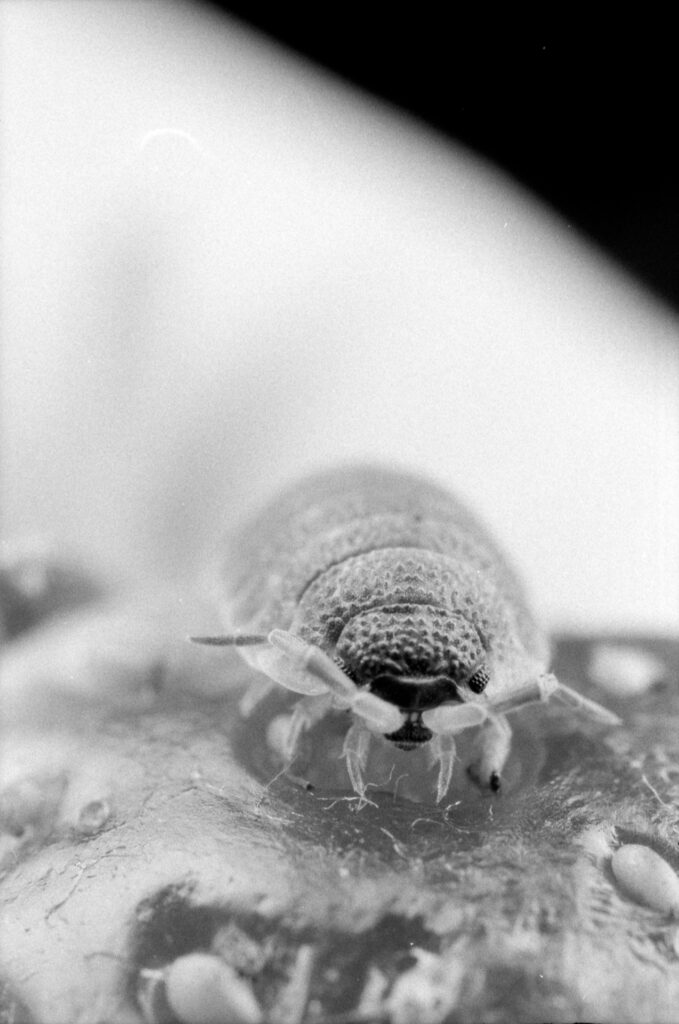
For the most part, switching from my digital macro setup to this analogue one was very straightforward. It’s a bit of a testament to Canon’s camera design approach that you can bounce between a film camera from 2000 and a mirrorless EOS R6 20 years its junior with almost no friction. All the accessories, including macro flash, work just fine too. The ETTL flash appears to have worked quite accurately even on this less advanced metering, and the extra latitude for highlight information thanks to the negative film has gone some way to covering up any minor over exposures with the flash.
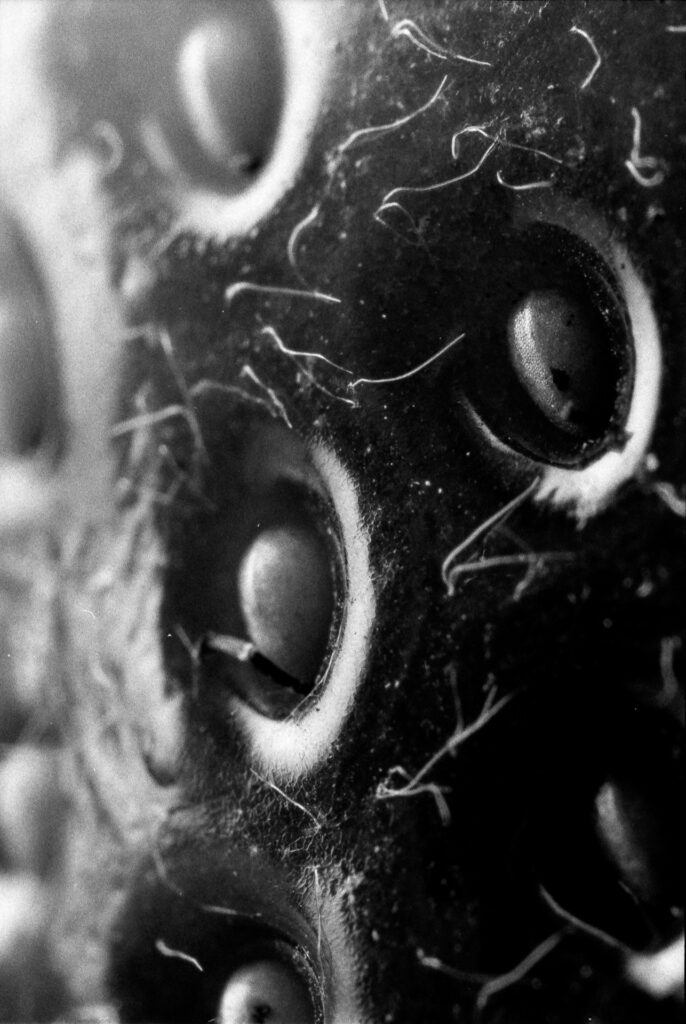
The biggest challenge, really, was being unable to verify exposure settings. How much flash compensation, and whether I can relax my shutter speed while keeping things sharp, are usually things I’ll keep tabs on as I’m working. Especially with my Yongnuo flash guns, which have only a passing acquantance with “consistency”. I mostly used the settings I would with my full-frame R6, which I often have around 400 ISO to keep more background information (the 80D is usually kept below this threshold, since it does not handle higher ISO as cleanly). The main difference was having to be a lot more mindful of minimum shutter speeds, since I didn’t have the luxury of sensor stabilisation here.
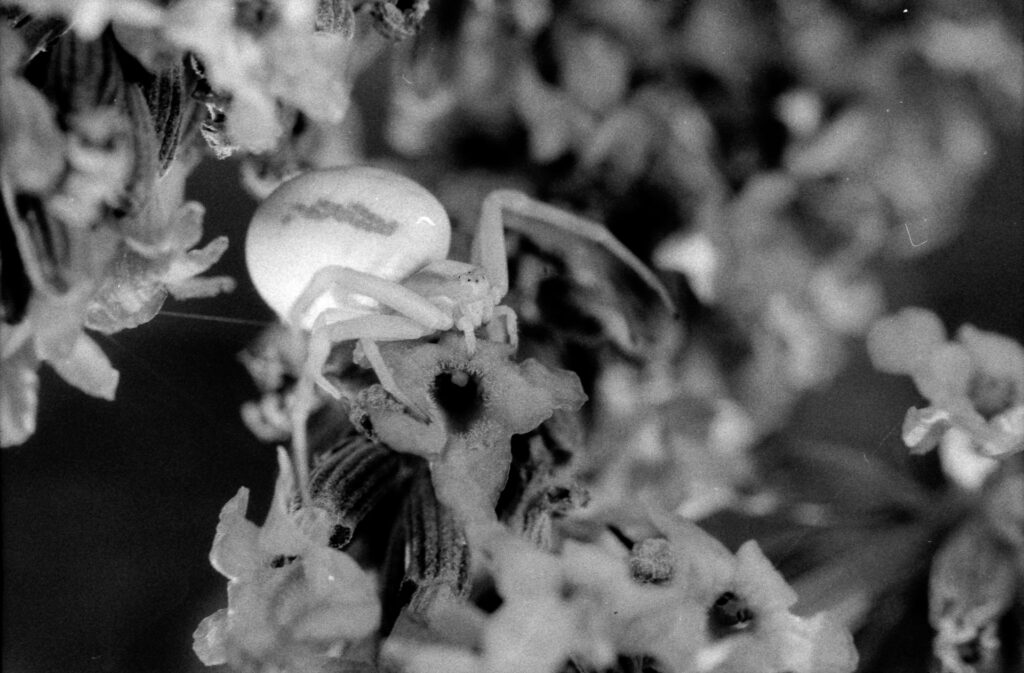
I got more successful photos out of this than I expected to. The Ilford HP5 handles the different colours in the backgrounds quite well, rather than blending them all into a grey mess, so even more noisy backgrounds didn’t completely overpower the subjects. It’s not the sharpest film, but I wasn’t about to try this for the first time on some slide film, given current prices.
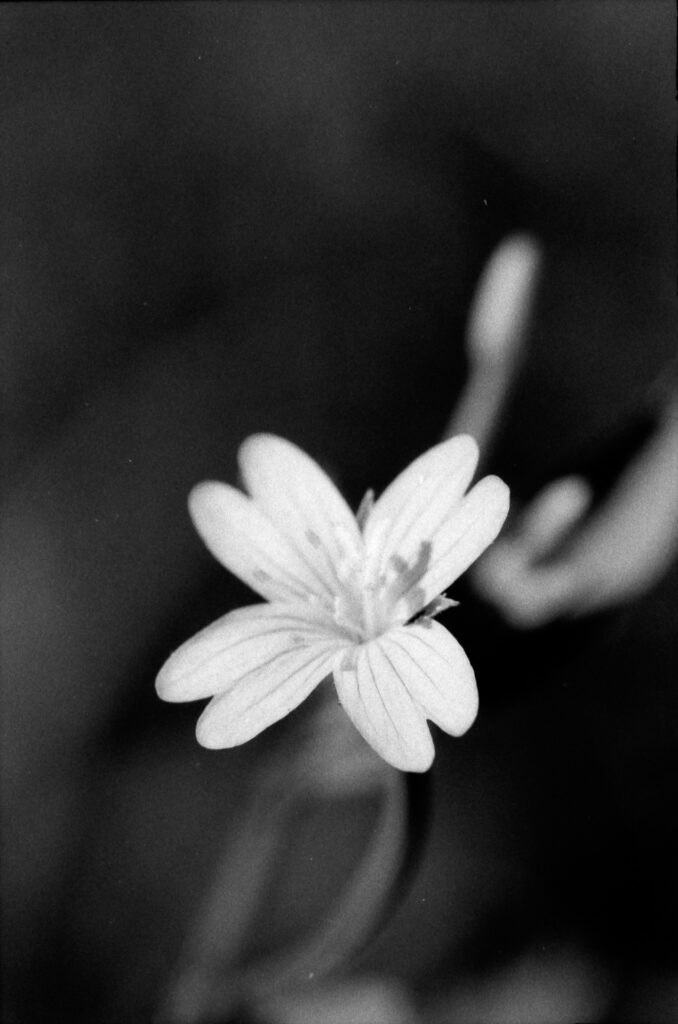
I’m quite pleased with the level of detail in these shots, considering the film choice. I’ll likely do this again with a higher-resolving film stock, probably Ektar for colour and perhaps risk the much lower ISO with Pan F, or Delta 100, for more B&W attempts. I’ve had some success previously with macro on Ektar, but my depth of field in that image was heavily limited because I hadn’t brought any flash with me, so I was sacrificing aperture on the altar of handheld shutter speeds.
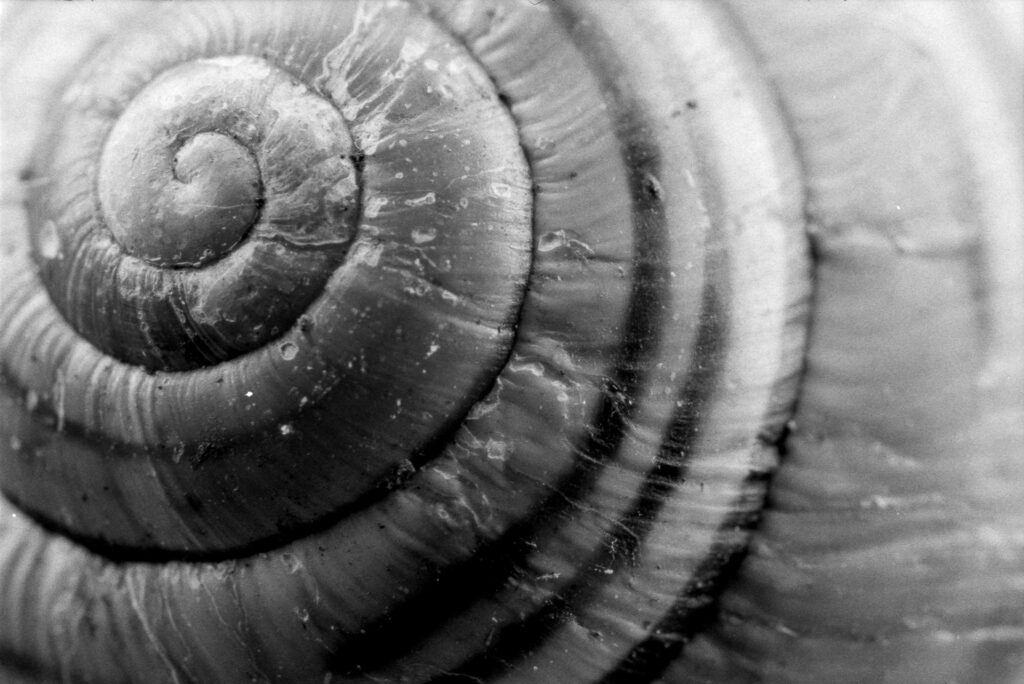
Stripy snail shell – Canon MP-E 65mm and Raynox DCR-250
I got more in-focus shots than I expected out of this. Not a great deal of winners in terms of composition and subject, but far more hits than misses for the whole roll, which is probably some kind of record for me. I especially like the snail shell, with the woodlouse a close second.
If you’re wondering why the Raynox, given that the MP-E can already go to 5x, it mostly comes down to a mixture of a “this is a terrible idea, so now I have to do it” thought process, and curiosity as to whether I could mix the magnification of the lens and the Raynox to overcome some of the drawbacks to the MP-E’s design, where after around 3.5-4x the diffraction introduced by the magnification-through-extension design really starts bringing down image quality even at wider apertures. The answer to that latter part is “somewhat”.
I started out doing photography on film, and spent a great deal of it doing macro. It was fun to get back to doing it how I used to, where I’d spend many hours taking roll upon roll of blurry photos of insects, likely to a mixture of pride and dismay for my parents who probably sometimes wished they’d got me onto cheaper hobbies, like competitive yacht racing or collecting classic cars.
If you’d like to see my more conventional macro and film work, please do take a look at my website, Flickr, or Instagram.
Thank you for reading.
Share this post:
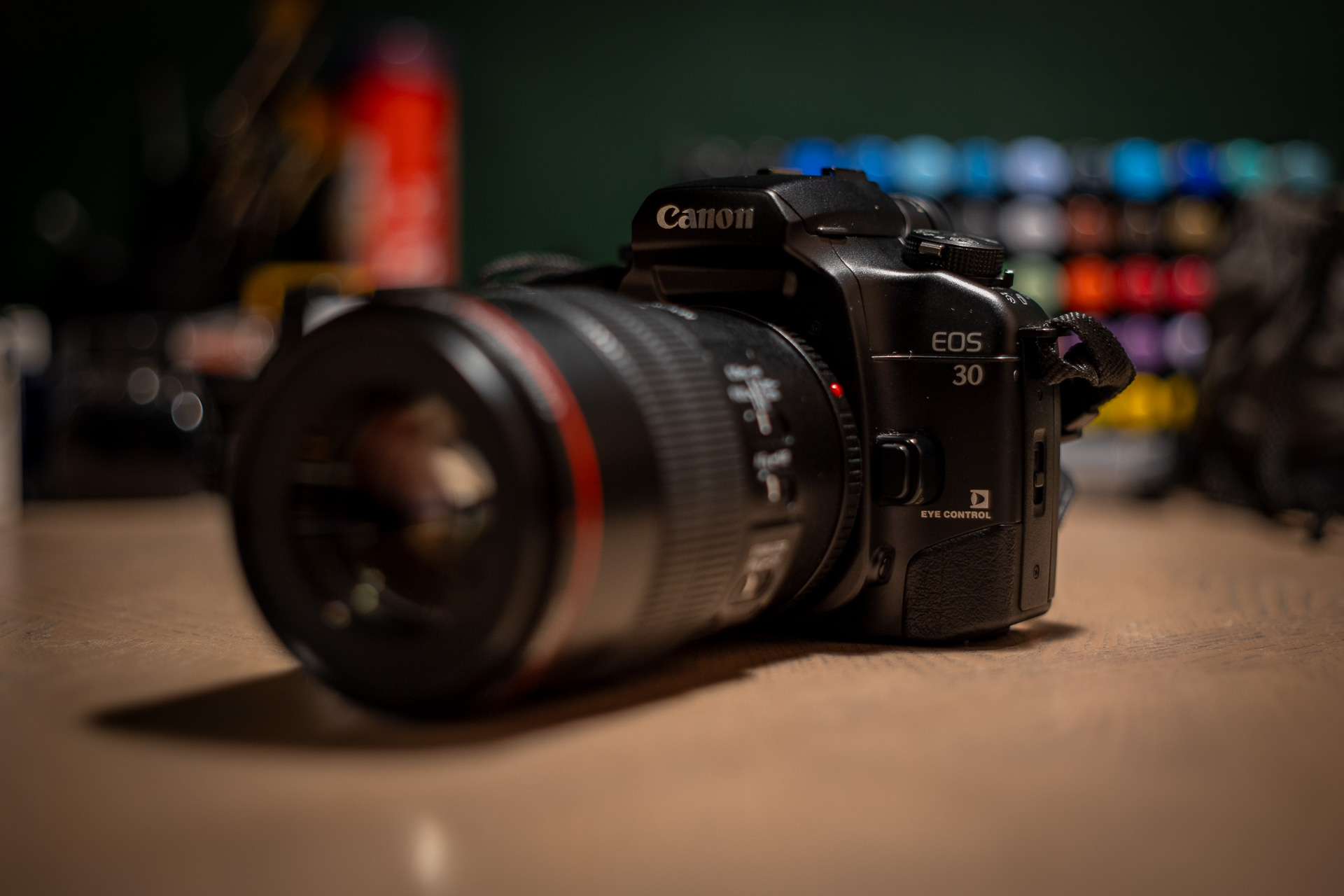
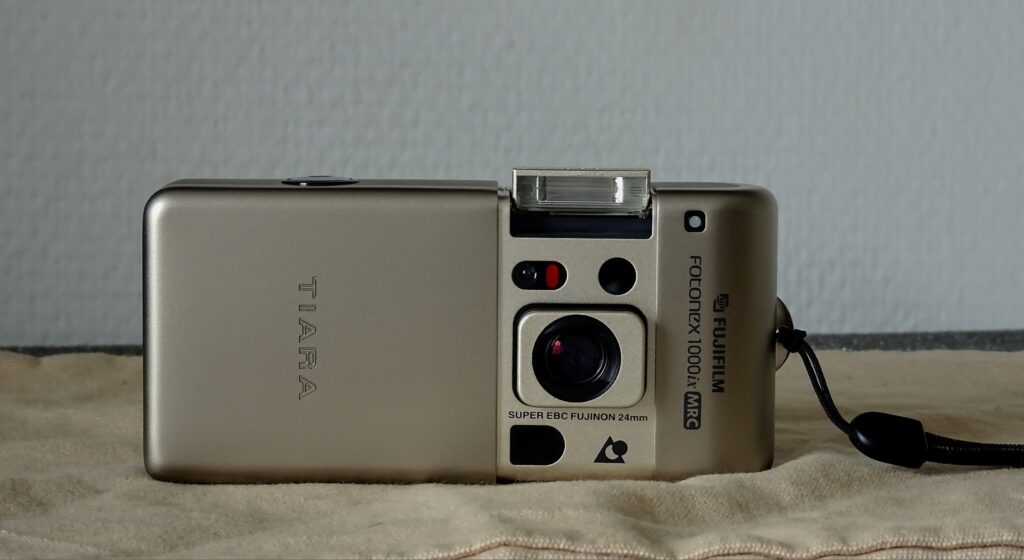

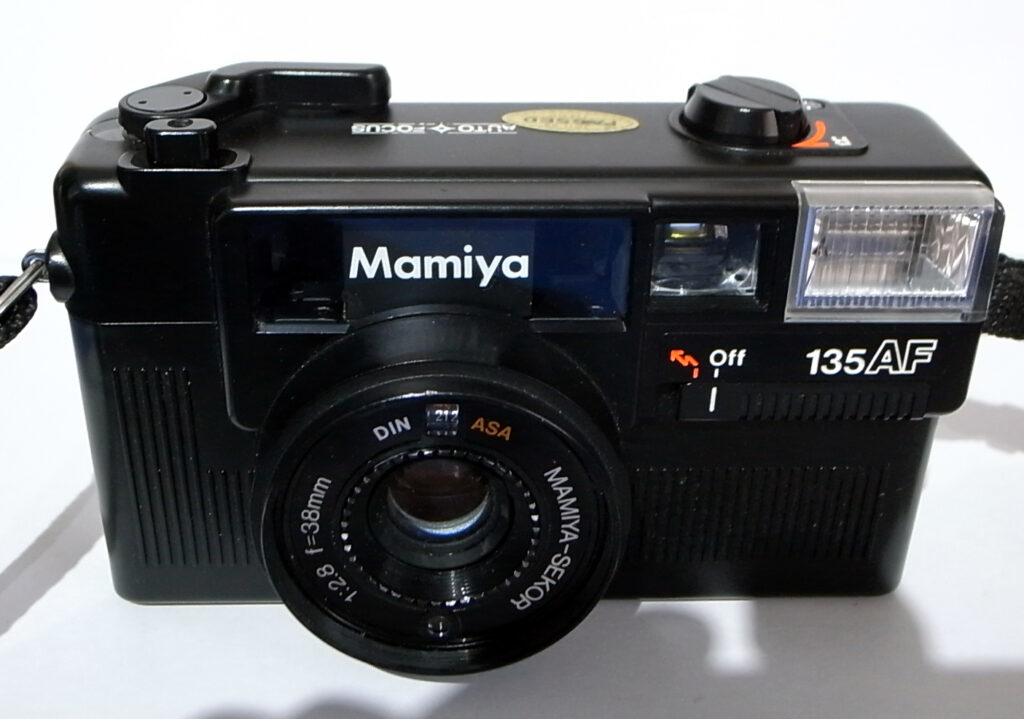
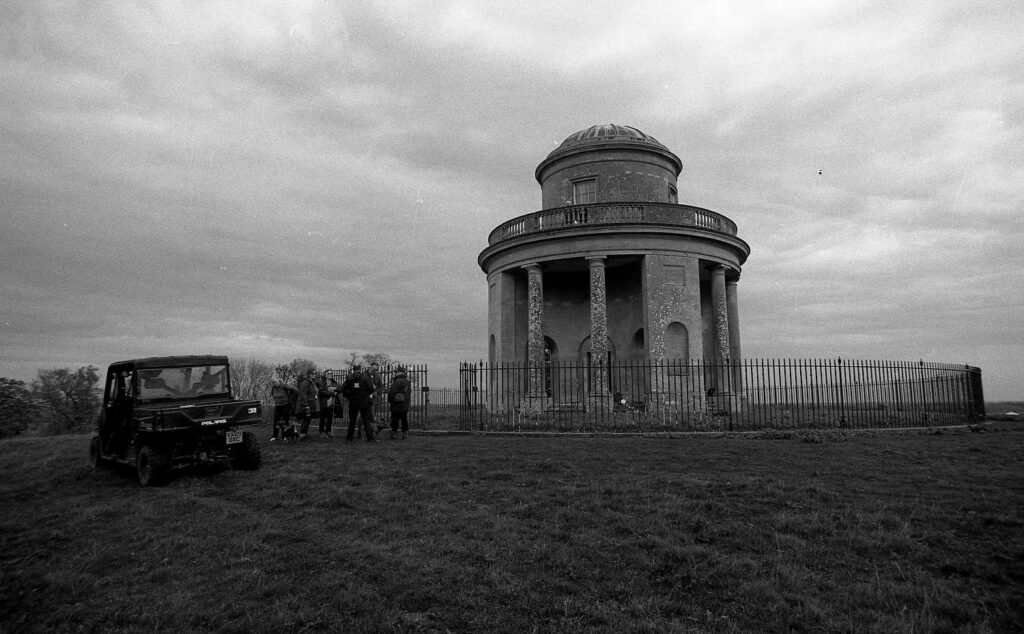




Comments
Jeffery Luhn on 5 Macro Frames with a Canon EOS 30 & MP-E 65mm
Comment posted: 28/09/2024
Those are some great macro shots! Not close- ups erroneously called macro, but real macro. The woodlouse on a strawberry was great, and maybe a bit crunchy too.
Alexander Seidler on 5 Macro Frames with a Canon EOS 30 & MP-E 65mm
Comment posted: 05/10/2024